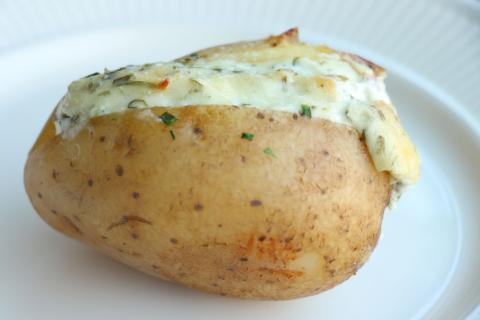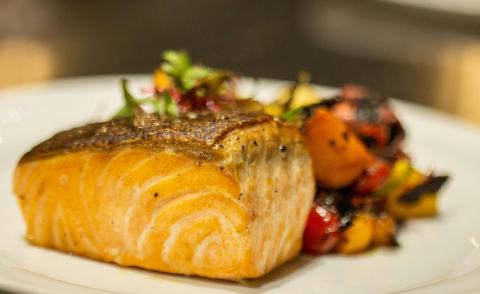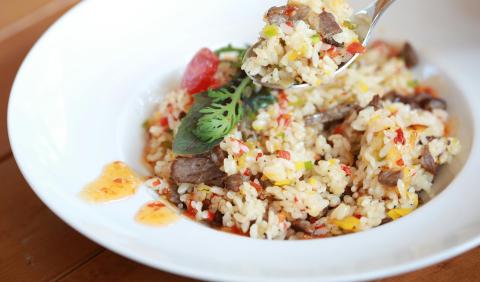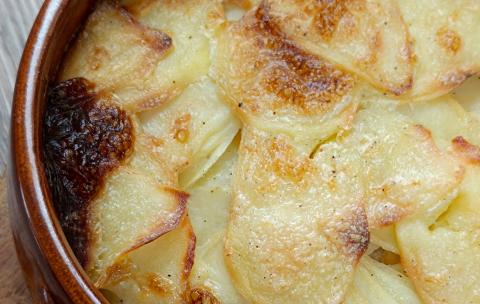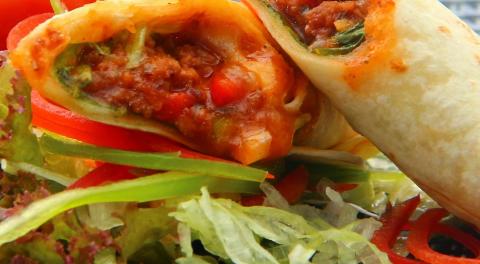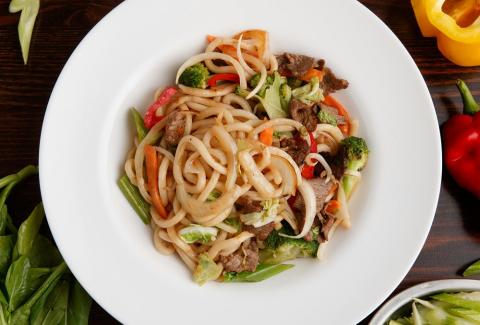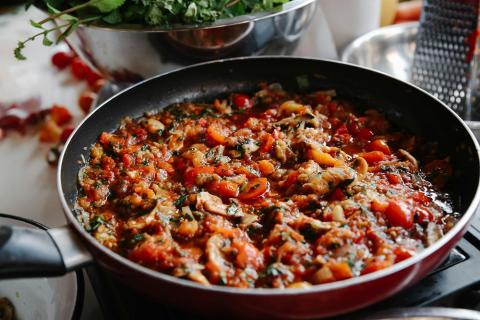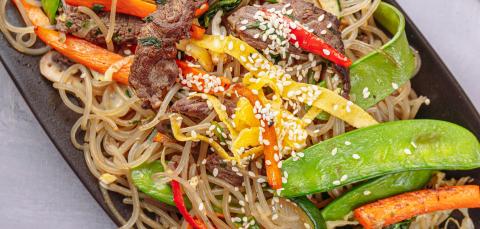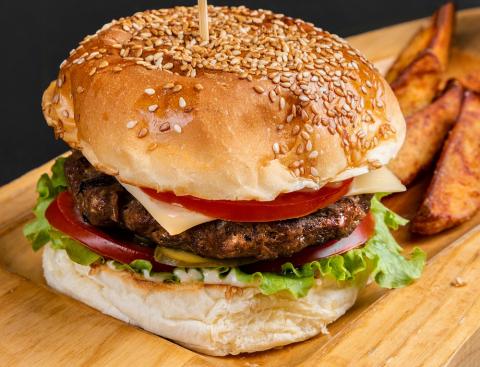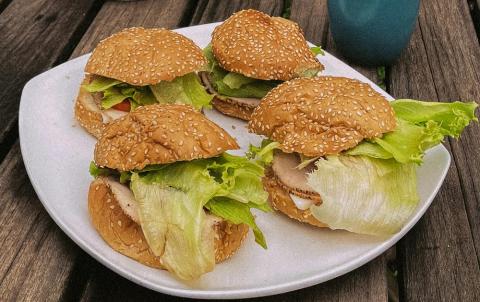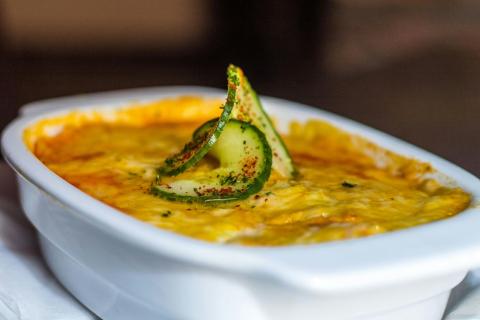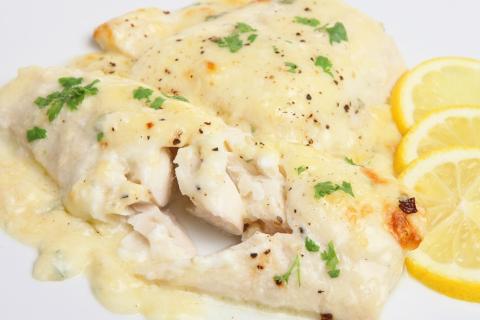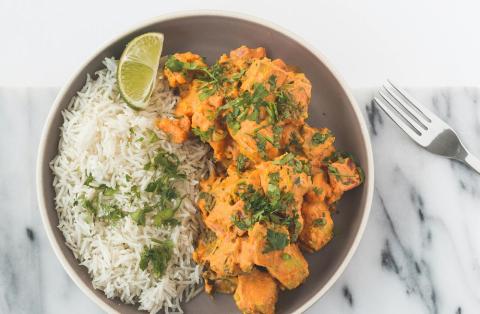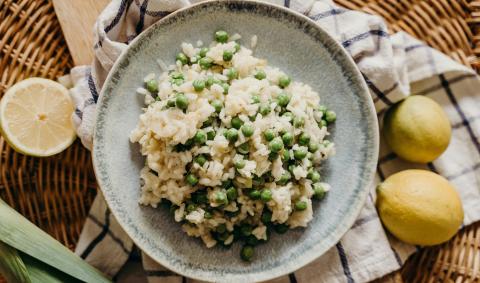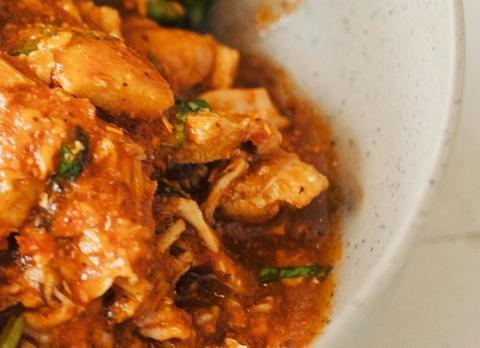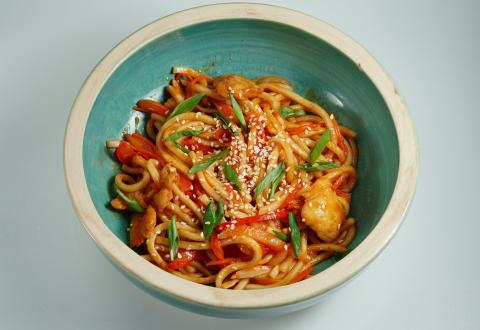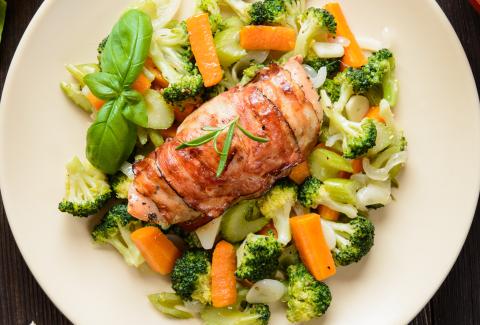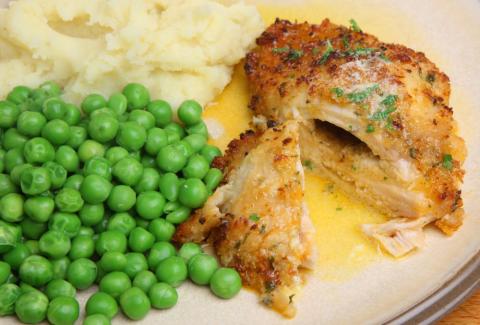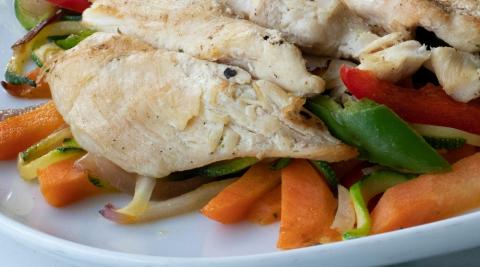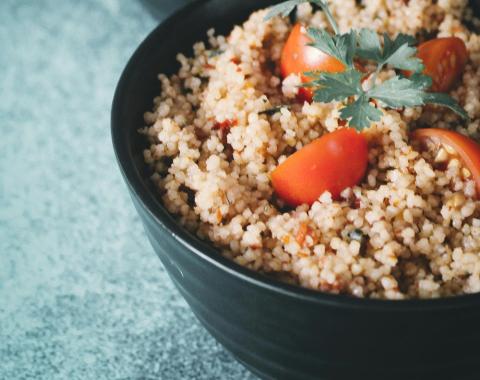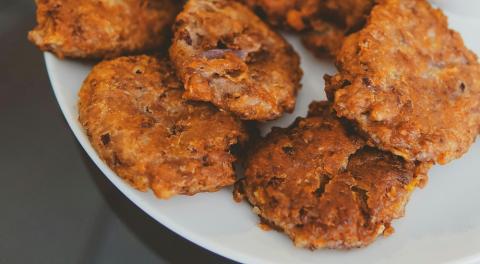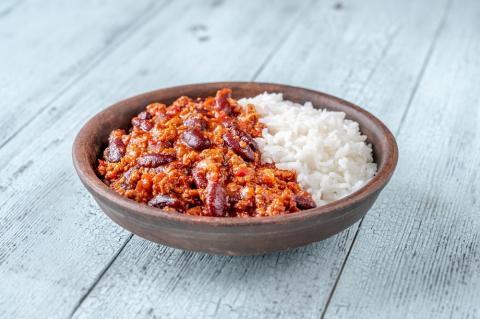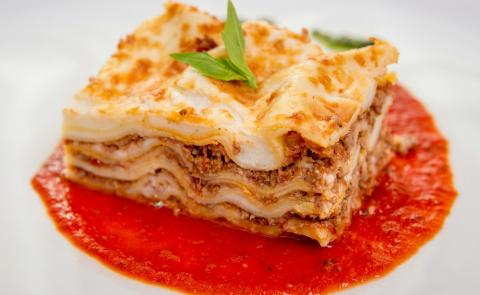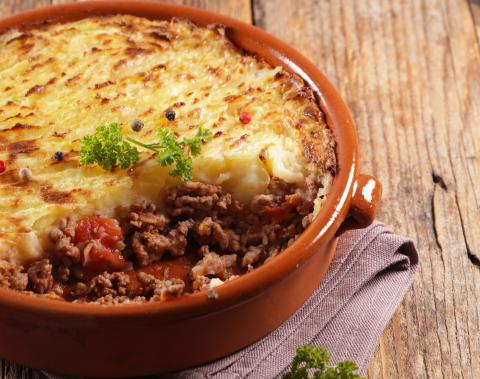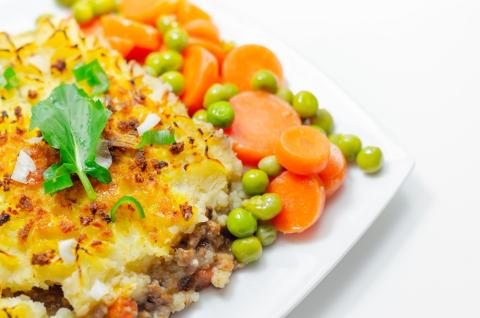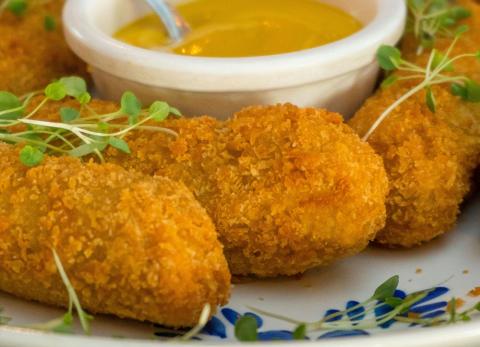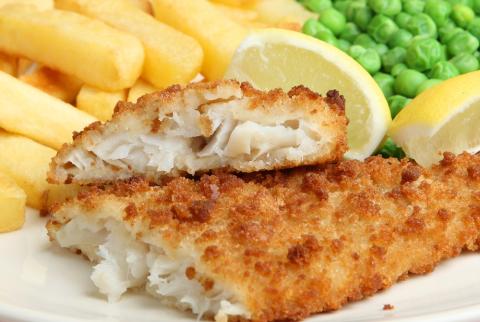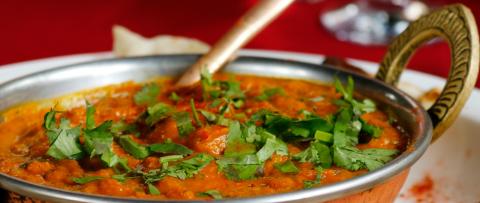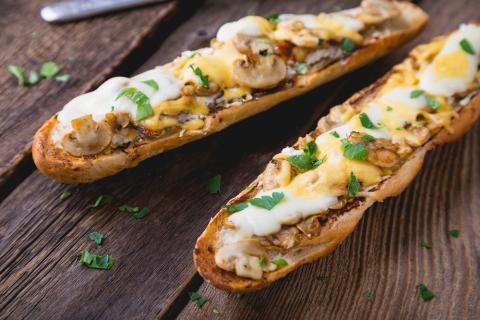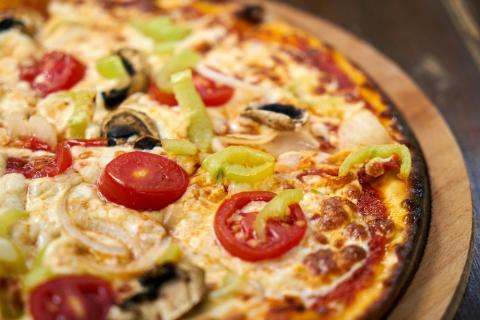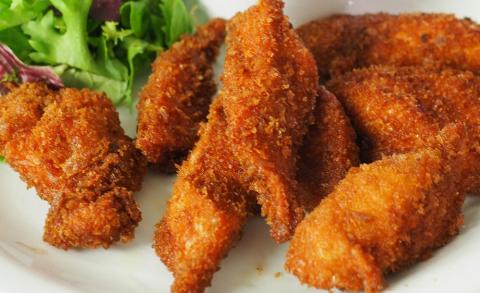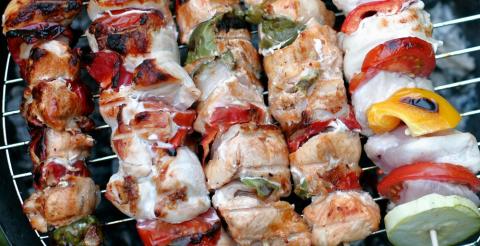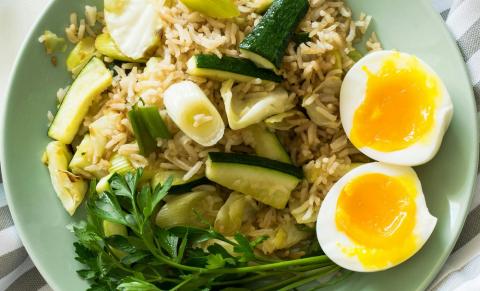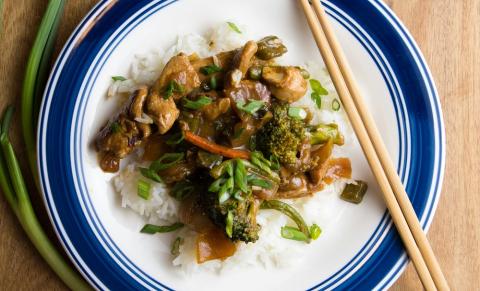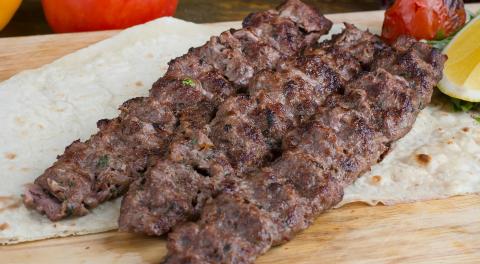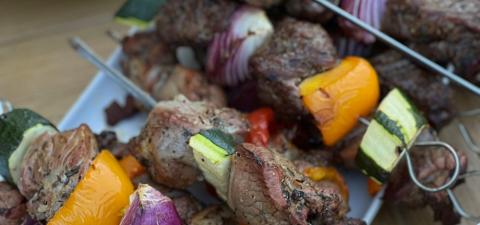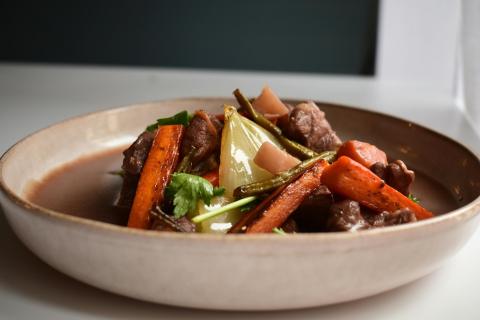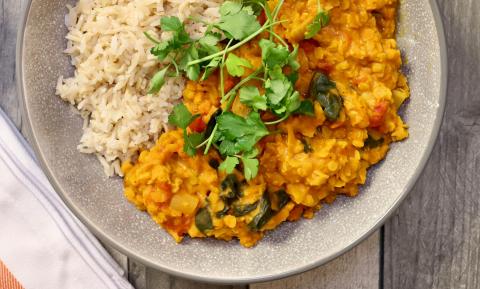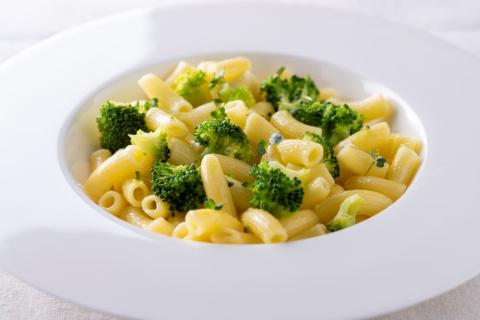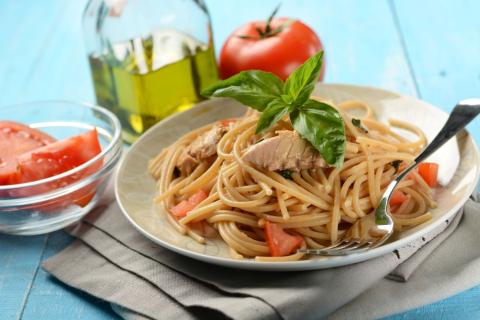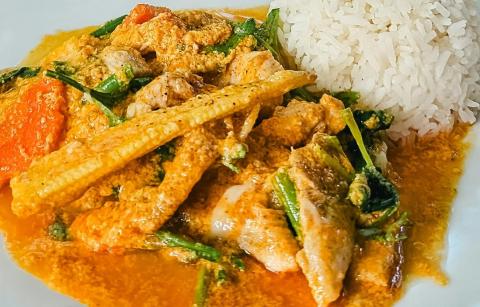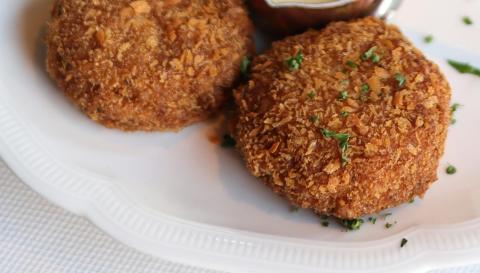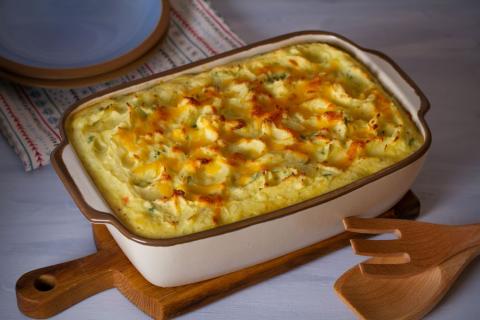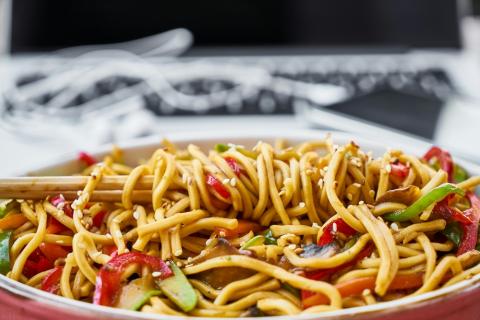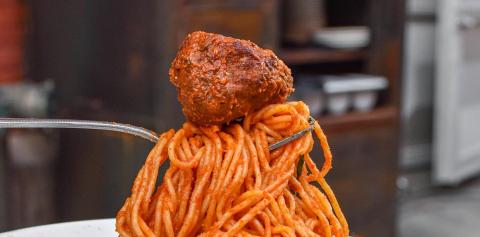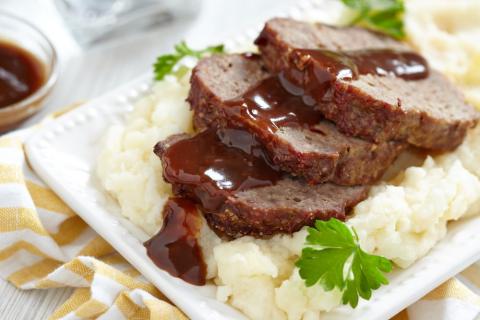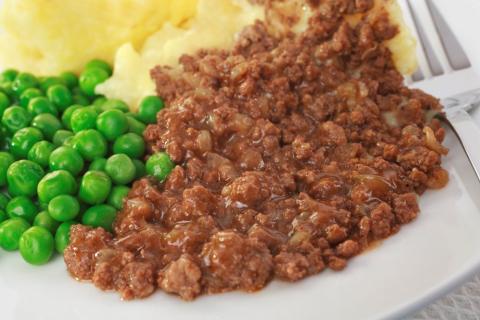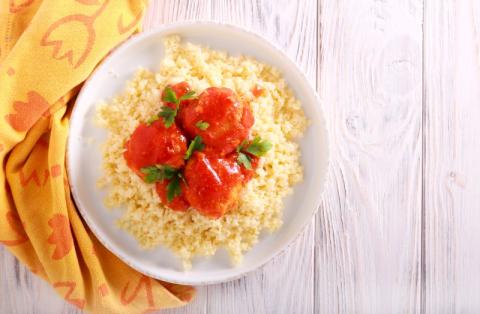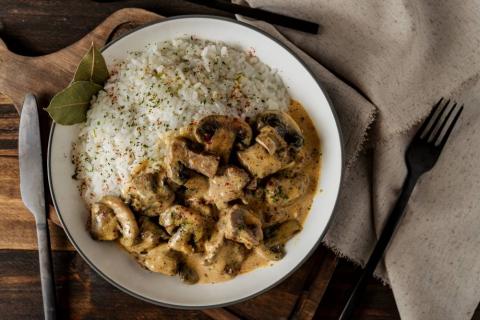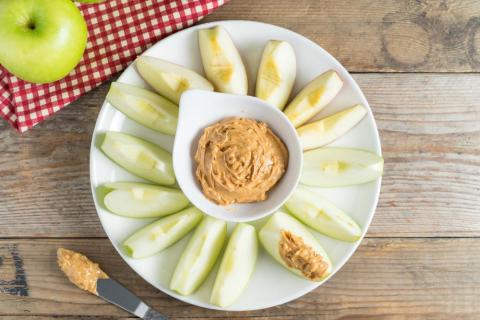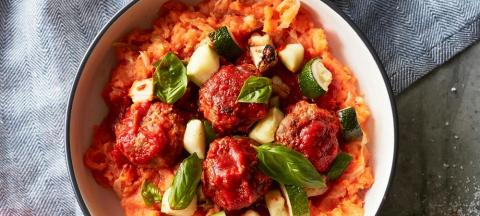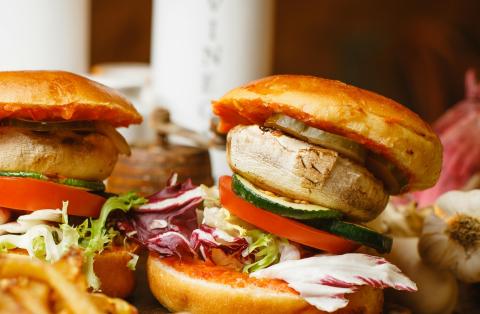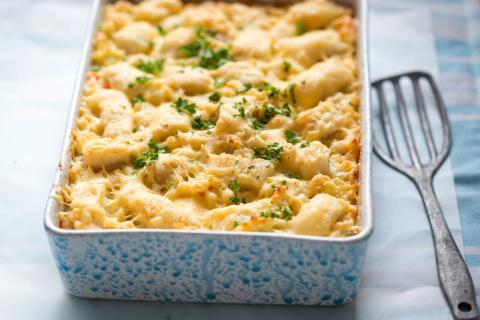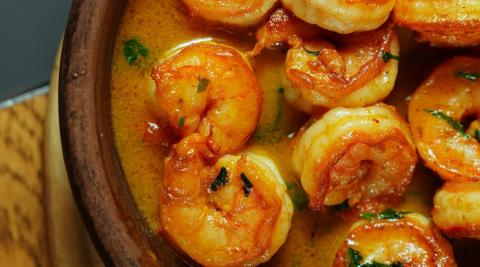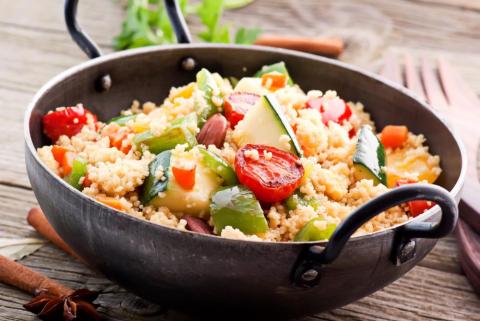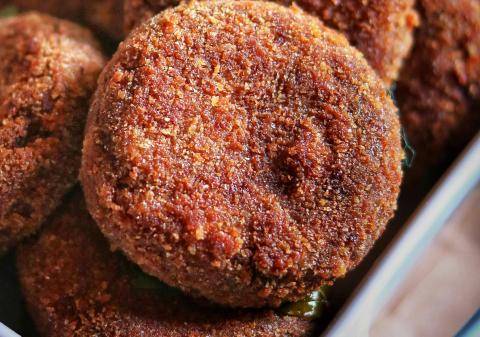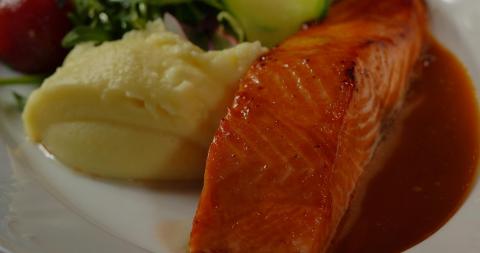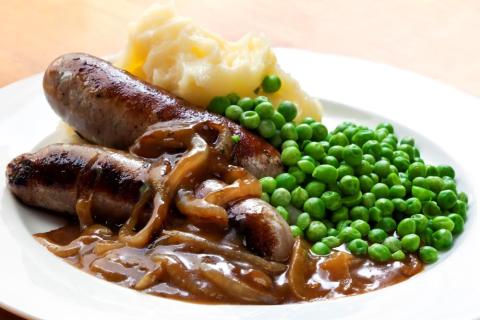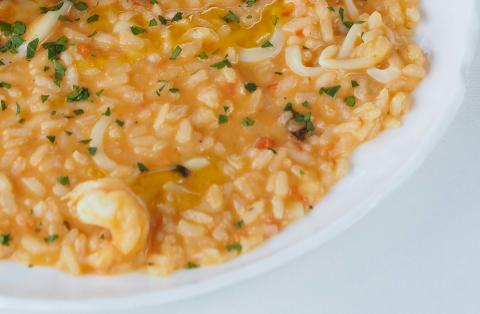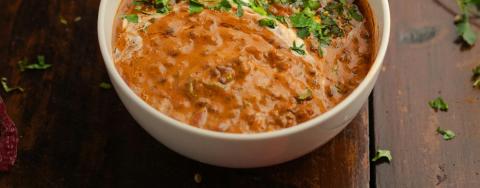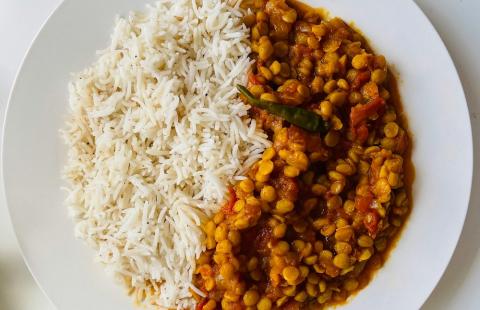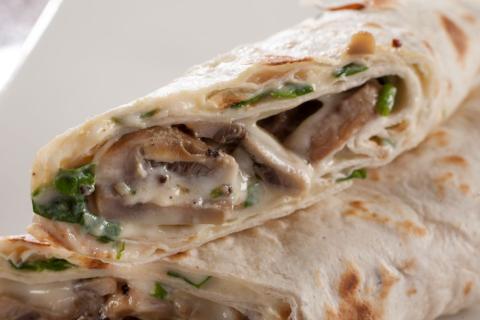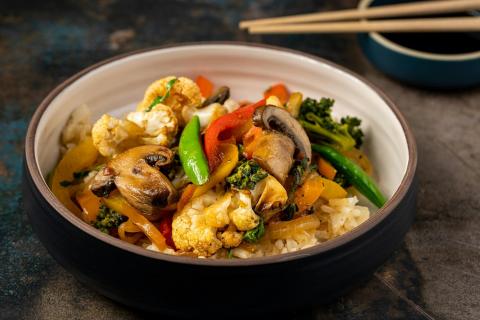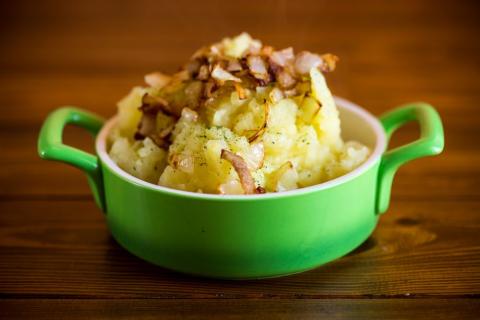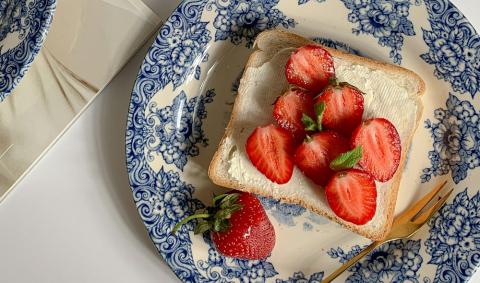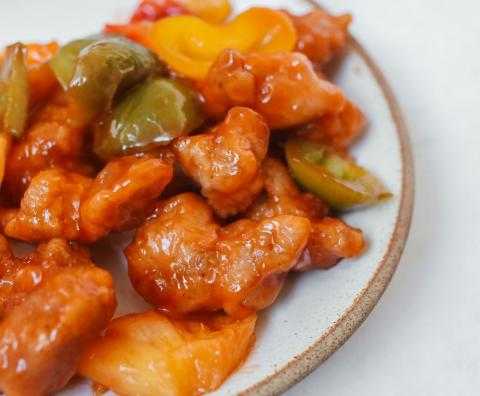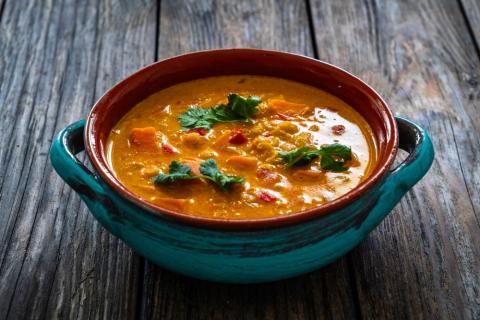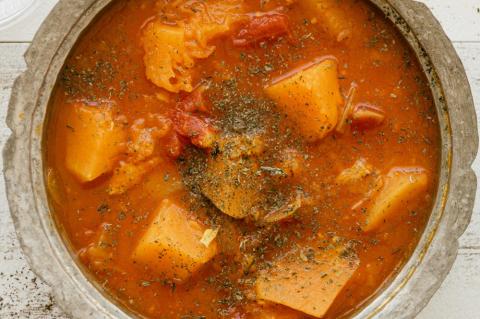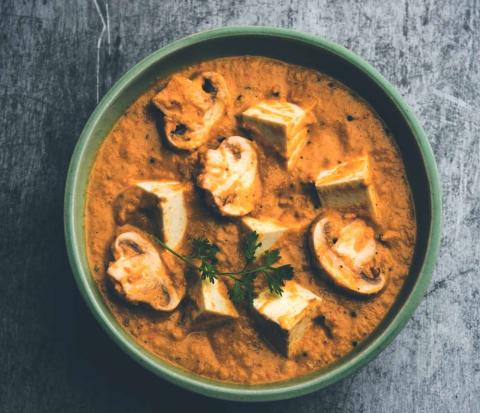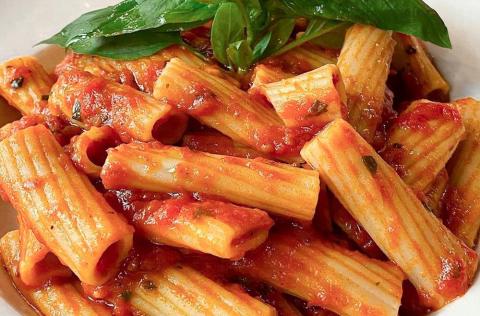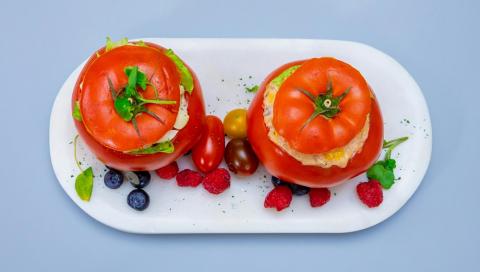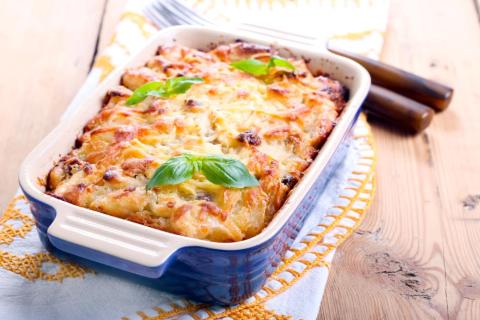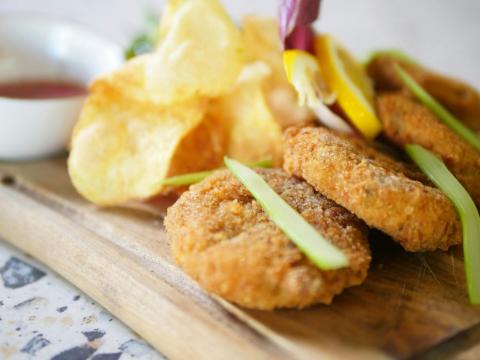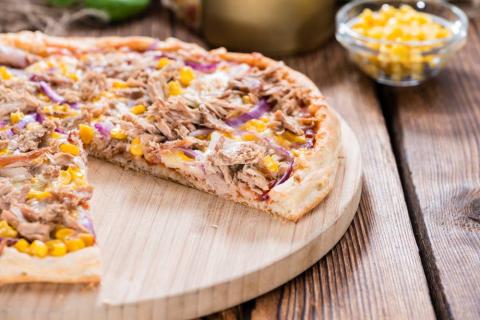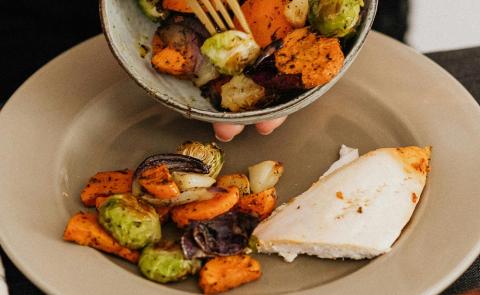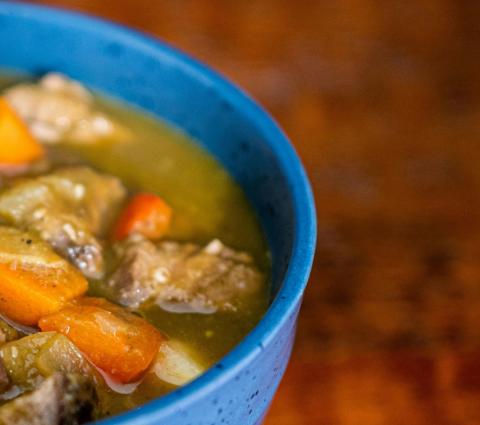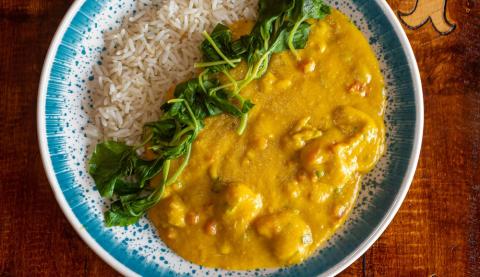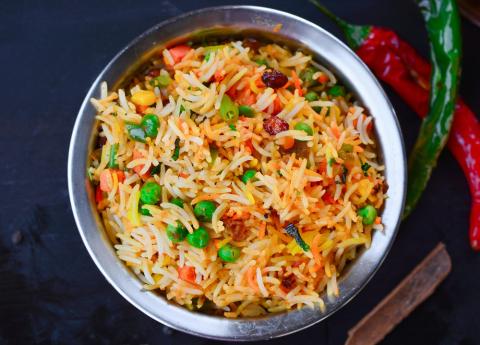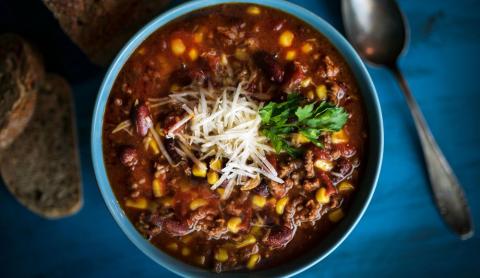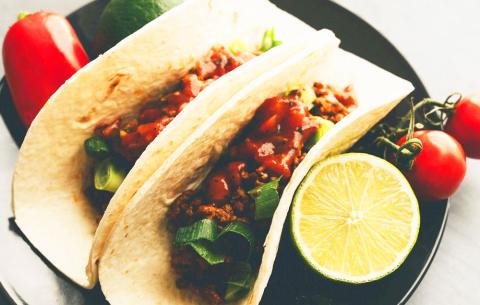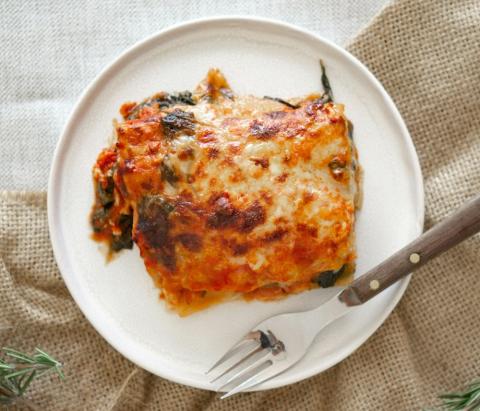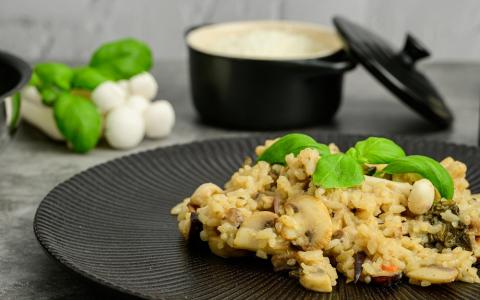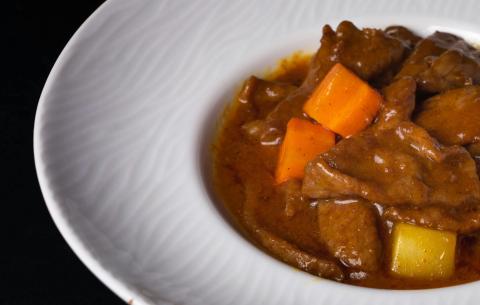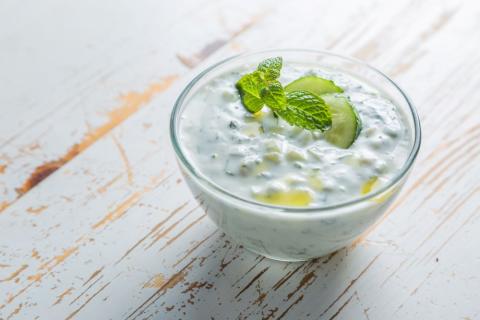- 1 Teaspoon (2g) Cinnamon
- 2 Teaspoons (6g) Paprika
- 2 (320g) Red Peppers
- 4 (12g) Garlic Cloves
- 2 Teaspoons (2g) Oregano
- 2 (190g) Pitta Breads
- (500g) Pork Mince
- 2 Eggs
- 4 Teaspoons (12g) Vegetable Oil
- 6 (540g) Parsnips
- ¾ Can (280g) Chopped Tomatoes
- 2 optional Tablespoons (6g) Parsley
Ingredients
Allergy Disclaimer
Always check the label of each ingredient for allergy warnings.
Method
- Preheat the oven to 180°C / 160°C fan oven / 325°F / gas mark 4.
- Deseed and chop the peppers, peel the garlic and tear the pitta bread into pieces
- In a food processor blitz the pepper, 2 cloves of garlic, pitta bread, cinnamon, oregano and half the paprika until finely chopped.
- Crack the eggs into a large bowl and beat well with a fork, then add the mince and mixture from food processor and mix together. Add black pepper if desired.
- Rub the oil on a baking tray then shape the mixture into 16 meatballs and place evenly spaced on the tray.
- Bake in oven for approximately 20 minutes until golden and cooked through.
- Meanwhile peel the parsnips and dice into 2cm pieces. In a pan cover with boiling water and cook over a high heat for 10-15 minutes until soft.
- Crush 2 garlic cloves or finely chop and put in a small pan along with remaining paprika and chopped tomatoes or passata, cook over a medium heat for approximately 5 minutes.
- Drain the parsnips and mash together with a fork or masher. Place the mash in the middle of a plate with meatballs on top. Pour some sauce over the top and top with chopped parsley if desired.
Time Saver Tips
Make meatballs in advance and keep in fridge until ready to cook.
Tips for Kids
Let them help to shape the meatballs. They may prefer it with mashed potatoes.
Nutritional Information
Based on a single serving of 435g (% of an adult's reference intake)
Energy
483 kcals ( 24 %)
2,027 kJ ( 24 %)
Fat
6.5 g ( 33 %)
Saturates
47 g ( %)
Sugar
15.7 g ( 17 %)
Salt
0.4 g ( 7 %)
Detailed nutritional information
| Per 100g | Per 435g serving | |
|---|---|---|
| Energy Kcals | 111 | 483 |
| Energy Kj | 466 | 2,027 |
| Protein | 8.8 g | 38.3 g |
| Total Fat | g | g |
| Saturated Fat | 1.5 g | 6.5 g |
| Carbohydrates | 10.8 g | 47 g |
| Total Sugars | 3.6 g | 15.7 g |
| NSP Fibre | 2.6 g | 11.3 g |
| Sodium | 60 mg | 261 mg |
| Salt | 0.1 g | 0.4 g |
Find out about nutritional labelling
Nutrition labels on the front of packaging
- Most of the big supermarkets and many food manufacturers display nutritional information on the front of pre-packed food.
- Front of pack nutrition labels provide information on the number of grams of fat, saturated fat, sugars and salt and the amount of energy (in kJ and kcal) in a serving or portion of a recipe.
- The labels also include information about reference intakes (expressed as a percentage) which are guidelines about the approximate amount of particular nutrients and energy required for a healthy diet.
- The colour coding tells you at a glance if the food has high (red), medium (amber) or low (green) amounts of fat, saturated fat, sugars and salt.
- The more greens on the label, the healthier the choice
- Amber means neither high nor low, so you can eat foods with all or mostly ambers on the label most of the time.
- Reds on the label means the food is high in that nutrient and these are the foods we should cut down on. Try to eat these foods less often and in small amounts.
Food shopping tips
If you’re trying to decide which product to choose, check to see if there's a nutrition label on the front of the pack. This will help you to quickly assess how your choices stack up. You will often find a mixture of red, amber and green colour coding for the nutrients. So when you're choosing between similar products, try to go for more greens and ambers and fewer reds if you want to make a healthier choice.
 Activities & Play
Activities & Play Behaviour
Behaviour Childcare
Childcare Development & Growing Up
Development & Growing Up Family, Friends & Relationships
Family, Friends & Relationships Feeding Your Baby
Feeding Your Baby Food & Eating
Food & Eating Health & Safety
Health & Safety Mental Health & Wellbeing
Mental Health & Wellbeing Money & Work
Money & Work Online Behaviour & Safety
Online Behaviour & Safety Pregnancy & First Days
Pregnancy & First Days School & Education
School & Education Sleep
Sleep


